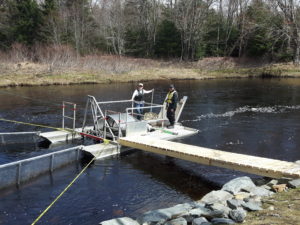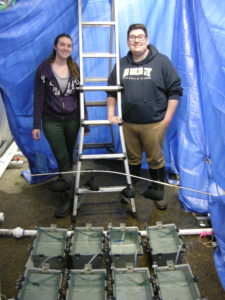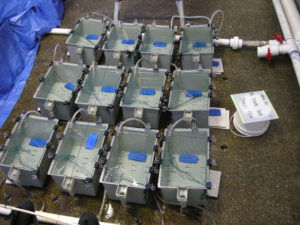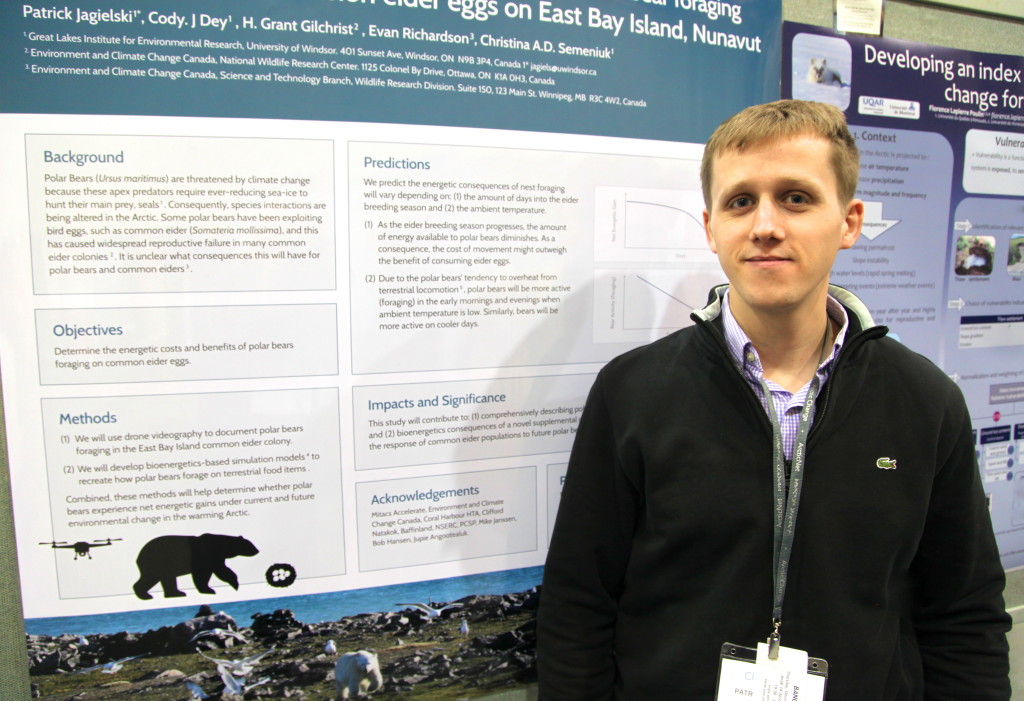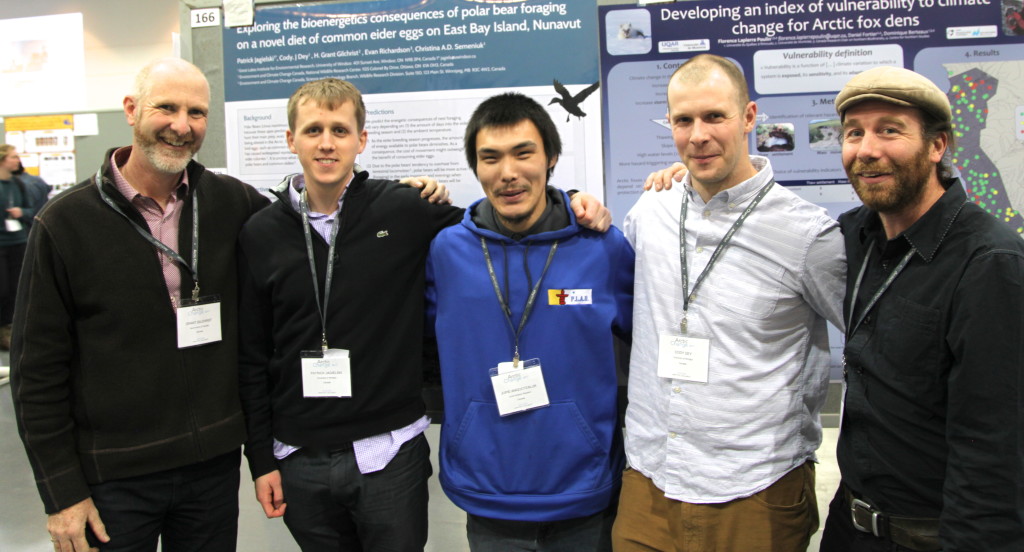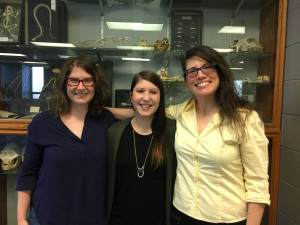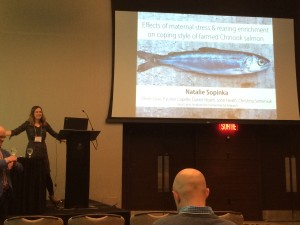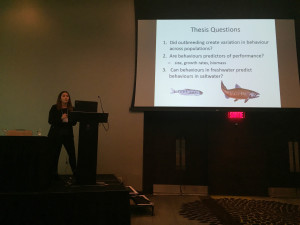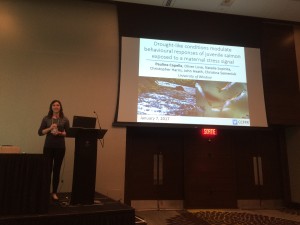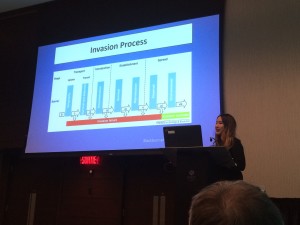A big congratulations to Cody Dey, whose paper “Increasing nest predation will be insufficient to maintain polar bear body condition in the face of sea-ice loss” was recently accepted to Global Change Biology.
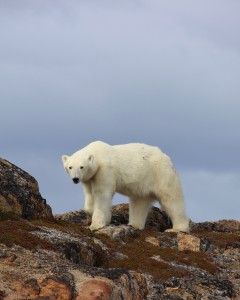
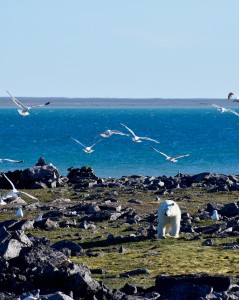
Read the full press release is below:
Polar Bears Enjoy Eggs for Breakfast
Arctic sea ice is melting earlier than ever, and this is causing changes in the diet of polar bears, concludes a recent study in the journal Global Change Biology.
New research from scientists at the University of Windsor, and Environment and Climate Change Canada, has shown that polar bears are feasting on the eggs of seabirds, rather than their preferred food, seals, once the sea ice has melted each spring.
“Historically, polar bears would use ice as a platform to hunt seal pups during the spring, but now that sea ice break-up is occurring so much earlier, they are forced ashore onto areas where seabirds are nesting” says Dey, a postdoctoral researcher at the Great Lakes Institute for Environmental Research, and lead author of the study. “As a result, polar bears are eating thousands of seabird nests each year, and the number is increasing as climate warming progresses.”
One of the seabirds that is most affected is the common eider. This large duck nests in groups on small Arctic islands, and has no defense if a polar bear shows up in their colony for a snack.
To study the interaction between polar bears and common eiders, Dey travelled to Baffin Island and worked with local Inuit from the community of Cape Dorset.
“Inuit are very in tune to this type of environmental change because they hunt eiders for meat, and collect eggs and down from their nests” Dey says. “Our research suggests that eiders might nest in different locations to avoid bear predation, which could make it harder for local people to harvest eiders”.
To further understand the relationship between polar bears and common eiders, Dey used data from his field studies to build computer simulation models. These model predict that polar bear predation of eider nests will continue to increase over the next 25 years, and that a large percentage of eider nests will be consumed by polar bears in years with earlier sea ice melt.
The models also predict that polar bears will get skinnier over time, even though they are eating more eider eggs.
“When the sea ice is melted polar bears are forced to fast until it freezes up again. Even if bears are eating eider eggs they probably can’t meet their caloric demand because eider eggs are relatively low in calories (compared to seals),” Dey says. “Our models suggest that polar bears can’t compensate for the loss of ice-based hunting opportunities by consuming eider eggs.”
Dey plans to extend this research by investigating how polar bear predation will affect common eider populations: “Some eider colonies are being decimated year after year by polar bears. This will clearly have some consequences for the eiders, but we don’t know the exact effects yet.”









